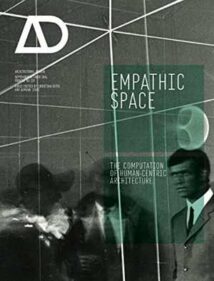نام کتاب: Empathic Space – The Computation Of Human-Centric Architecture Ad
نویسنده: Christian Derix و Asmund Izaki
ویرایش: ۲
سال انتشار: ۲۰۱۴
کد ISBN کتاب: ۱۱۱۸۶۱۳۴۸۱, ۹۷۸۱۱۱۸۶۱۳۴۸۱,
فرمت: PDF
تعداد صفحه: ۱۴۴
حجم کتاب: ۲۴ مگابایت
کیفیت کتاب: OCR
انتشارات: Wiley
Description About Book Empathic Space – The Computation Of Human-Centric Architecture Ad From Amazon
In recent years, questions of space have gained renewed momentum in architecture and urban design, as adaptation, densification and sustainable regeneration have become an increasing priority. While most computing-based design tends to emphasise the formal aspects of architecture, overlooking space and its users, the ‘original’ computational design approaches first spearheaded in the UK in the 1960s and 1970s tended to be focused on behavioural and occupational patterns. Over the last decade, a new generation of design research has emerged that has started to implement and validate previous investigations into spatial computation, aiming to understand how to design spatial configurations based on user experiences. This revives an interest in the experiential that was first explored in the early 20th century by German and Nordic organic architects, who invented design methods that correlated cognitive responses of buildings’ occupants to spatial structure. The current revival of human-centric design, however, represents the first design approach that synthesises spatial design and algorithmic techniques with organic design thinking, which could also be regarded as a return to the ‘first principles’ of architectural design. Contributors include: Paul Coates, Christian Derix, Olafur Eliasson, Lucy Helme, Bill Hillier, Asmund Izaki, Prarthana Jagannath, Dan Montello, Juhani Pallasmaa, Philip Steadman and Guy Theraulaz. Featured Architects/Designers: Jussi Angesleva (Art+Com), Stan Allen, Aedas|RD, Markus Braach (Kaisersrot), Hermann Hertzberger, Kazuhiro Kojima (Cat), Pablo Miranda and Rafi Segal.
درباره کتاب Empathic Space – The Computation Of Human-Centric Architecture Ad ترجمه شده از گوگل
در سالهای اخیر ، با توجه به سازگاری ، تراکم و بازآفرینی پایدار ، اولویت فزاینده ای در زمینه معماری و طراحی شهری ایجاد شده است. در حالی که بیشتر طراحی های مبتنی بر محاسبات تمایل به تأکید بر جنبه های رسمی معماری ، مشرف به فضا و کاربران آن دارند ، رویکردهای طراحی محاسباتی “اصلی” اولین بار در انگلستان در دهه های ۱۹۶۰ و ۱۹۷۰ هدایت می شدند و تمرکز آنها بر الگوهای رفتاری و شغلی بود. در دهه گذشته ، نسل جدیدی از تحقیقات طراحی ظهور کرده است که با هدف درک نحوه طراحی پیکربندی های مکانی بر اساس تجارب کاربر ، تحقیقات قبلی را در زمینه محاسبات فضایی پیاده سازی و اعتبار سنجی کرده است. این امر علاقه به تجربیاتی را که برای اولین بار در اوایل قرن ۲۰ توسط معماران ارگانیک آلمانی و نوردیک کشف شد ، احیا می کند ، آنها روش های طراحی اختراع کردند که پاسخ های شناختی ساکنان ساختمان ها را به ساختار فضایی مرتبط می کند. احیای فعلی طراحی انسان محور ، با این حال ، نشان دهنده اولین رویکرد طراحی است که طراحی فضایی و تکنیک های الگوریتمی را با تفکر طراحی آلی تلفیق می کند ، که همچنین می تواند به عنوان بازگشت به “اصول اولیه” طراحی معماری در نظر گرفته شود. مشارکت کنندگان در این زمینه عبارتند از: پل کوتس ، کریستین درکس ، اولافور الیاسون ، لوسی هلمه ، بیل هیلیر ، آسموند ایزاکی ، پرارتانا جاگانات ، دن مونتلو ، ژوهانی پالاسما ، فیلیپ استیدمن و گای ترالاز. معماران / طراحان برجسته: Jussi Angesleva (Art + Com) ، استن آلن ، Aedas | RD ، Markus Braach (Kaisersrot) ، هرمان هرتزبرگر ، Kazuhiro Kojima (گربه) ، Pablo Miranda و Rafi Segal.
[box type=”info”]![]() جهت دسترسی به توضیحات این کتاب در Amazon اینجا کلیک کنید.
جهت دسترسی به توضیحات این کتاب در Amazon اینجا کلیک کنید.![]() در صورت خراب بودن لینک کتاب، در قسمت نظرات همین مطلب گزارش دهید.
در صورت خراب بودن لینک کتاب، در قسمت نظرات همین مطلب گزارش دهید.

